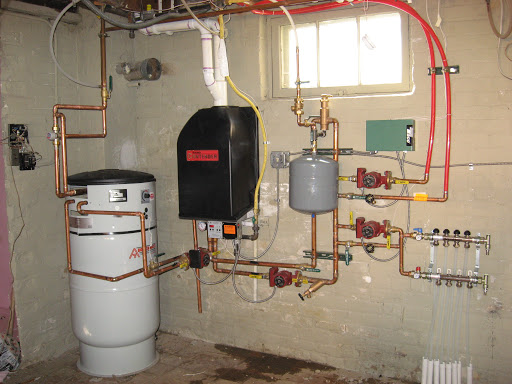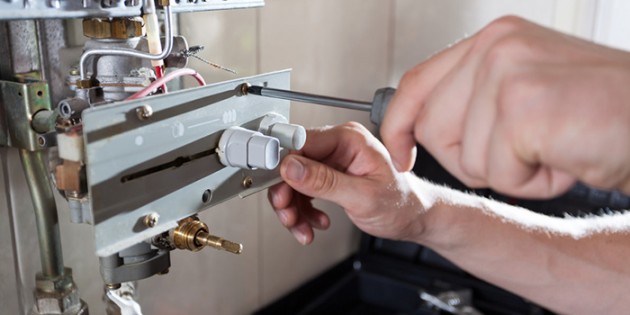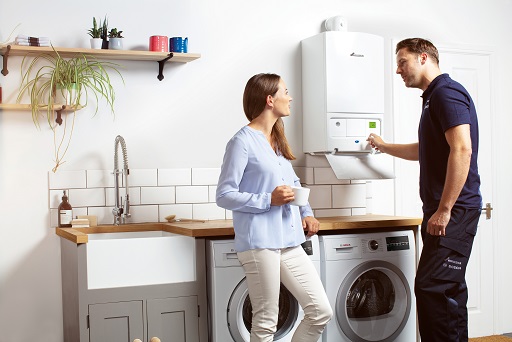
Introduction to Boiler
When you hear a boiler, the first thing that comes to the mind is an equipment used for boiling liquids. Well, you are close, but the definition is simple. A boiler refers to a pressure vessel that is enclosed, which provide a surface for the transfer of heat from combustion products to water until it becomes hot or turn to steam. The boiler is made up of different components that are well integrated, which help produce steam or hot water, which is then used for another process. In simple words, the boiler is used to produce steam or hot water. Water is a medium for transferring heat and a cheap one too.
When water is boiled to steam, it produces energy, which is almost the same as that of gunpowder. The boiler has hot water on one side and a combustion element on the other side while the other parts where heating of water takes place is the surface. An efficient boiler must have a large heating surface, and the heating surface is expressed in square meters—the larger the heating surface, the more efficient the boiler.
The Boiler System
The boiler is made up of three systems that make it work efficiently
- Feedwater system
- Steam system
- Fuel system
Feedwater system: this includes the parts and components that provide water to the boiler. The water converted to steam is refer to as feedwater. It is supplied to the boiler room from two sources, condensed steam or condensate, and makeup water. Condensate is steam that has not been utilized, which can be turned back to water under reduced pressure. Makeup water is raw water which is supplied from a source to the boiler. The difference between makeup water and condensate is that condensate is water returned to the boiler from the previous process and contains some of the chemicals used for treatment.
Steam System: it includes parts that control the production of steam, collects steam, and directs steam to where it is needed through a piping system. It also contains components that regulate the steam (pressure relief valves, temperature gauges, and pressure gauges)
Fuel System: These parts supplies fuel used in the generation of steam. The equipment used is dependent on the type of fuel used by the boiler.
Component of a Boiler
These are the primary component of a boiler, but it varies according to manufacturers
Burner: The burner is the component that supplies heat to the system. Fuel used for the combustion of a boiler can be natural gas or oil. It is the component that initiates combustion.
Combustion Chamber: this is where combustion happens, it is usually made of cast iron. Heat is transferred to the heat exchanger in the combustion chamber. The temperature can rise to several hundred degrees.
Heat Exchanger: The heat exchanger’s function is to transfer heat from the burner to the water in the boilers tank without having direct contact with it. It serves as a medium of heat exchange.
Expansion Tank: it is usually located off the main boiler tank, and its function is to prevent excess pressure from overflowing the system.
Supply Lines: This is a piping system used to deliver the steam to points where it is needed.
Return Lines: this is another set of piping systems that return the water or steam to the boiler tank if it cools or changes state.
Circulatory Pumps: the circulatory pump help pushes steam or hot water from the boiler and distributes it to various points where it is used.
Refractory: this is usually a fire glass or clay; they ensure the fire is enclosed within the combustion chamber.
How to Service a Boiler
Servicing a boiler entails a couple of activities, which are vital for the boiler’s efficient workings. Servicing the boiler involves manual inspection of the boiler for any faults or potential issues or servicing the parts that need to be serviced. This inspection helps catch any problem or issue that might lead to the total breakdown of the boiler. Servicing your boiler is one of the ways of ensuring it works perfectly and efficiently all year round. An engineer or boiler specialists should be called to service the boiler. The boiler should be serviced yearly or before winter. However, below are some of the activities that ought to be carried out during the servicing of a boiler
- Visual inspection: the boiler will be checked for any visible sign of corrosion or leakages Inside or outside the boiler.
- Boiler fired up: the engineer checks all the controls for any faults.
- Flue analysis: the engineer will analyze the gas, whether it is producing dangerous gases such as carbon monoxide.
- Gas pressure check: this is done to check whether the gas pressure is not too high or too low
- Internal check: here, the boiler’s casing is removed to check whether all the internal components are working correctly.
These are just the fundamental processes that should be carried out by the engineer during servicing. Depending on what he discovers, a more thorough check can be done to get what needs to be changed or repaired.
Reasons for Servicing the Boiler
Servicing your boiler is essential due to the following reasons
Safety: servicing the boiler allows you to detect gases like carbon monoxide, which is highly toxic to humans. Many people die or get sick yearly from carbon monoxide because the gas cannot be detected by scent and is colorless.
Prevent breakdown: servicing your boiler fish out fault or what could lead to a potential problem, thereby saving you some cash—spending extra money for breakdown or total replacement of the boiler. Also, it keeps the boiler in the best possible condition.
Saves energy and money: regular servicing of the boiler will ensure that all the parts and components are in the best possible condition, thereby saving money and energy.
Warranty: Boilers comes with a warranty of 1-15years which is valid as long as the boiler is serviced. Any damages incurred by the boiler during this period will be repaired free of charge.

















